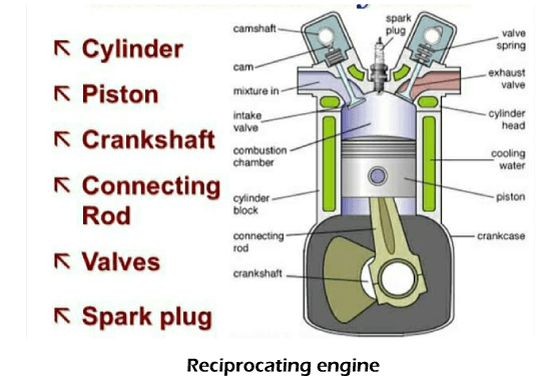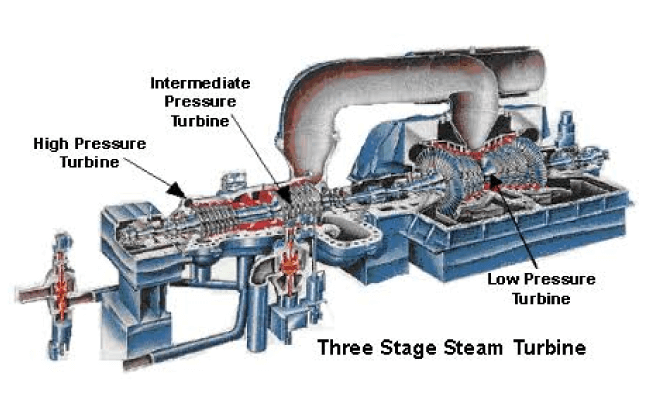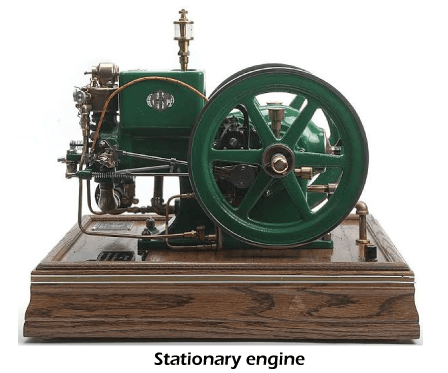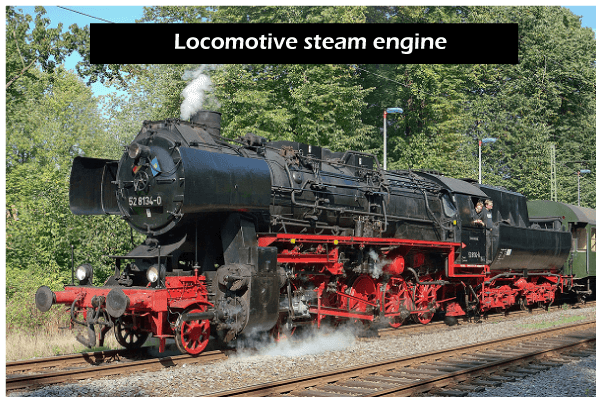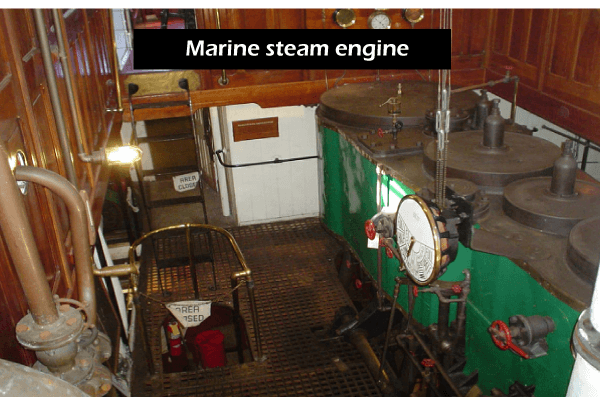Who invented Steam Engine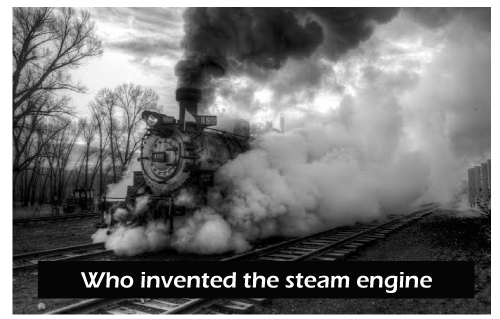
Since there were many inventors who experimented and made improvements to the steam engine, But it was Thomas Savery who first invented the steam pump in 1721. He called it water by fire. After him, a more workable and practical steam engine was developed by Newcomen. After that, James Watt observed the drawbacks of the Newcomen steam engine and made a very important improvement. However, by the time many improvements were made by different inventors, but these three are the important names for early inventions and developments. What is a steam engine?When the steam in a machine begins to expand and condense, an engine uses it for producing power. That engine is called a steam engine. It is a heat engine that, with the help of steam as its fluid, does mechanical work. It used the force generated by steam pressure to and pushes the piston back and forth. This pushing force is transformed into rotational force by the connecting rod and wheel; as a result, work is done. 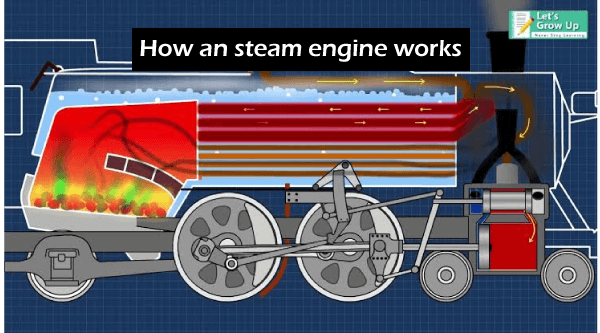
DevelopmentsThe important developments of the steam engine are as follows: 1. Some early experimentsBefore the invention of Thomas Savery, there were some early experiments done by the ancient people. The first steam engine was created by the Greek mathematician named Hero of Alexandria in the 1st century AD. The engine was called Aeolipile. In 1551 and 1629 new improvement was made by Taqi Al-Din and Giovanni Branca respectively. That engine was called a steam turbine. After that, it was Jeronimo De Ayanz Y Beaumont who got patents for 50 steam-powered as well as water pumps inventions in 1606. Then for raising the weights, Denis Papin invented the piston in 1690.
Thomas Savery developed and invented the first commercial steam-powered device (water pump) in 1698. This water pump condensed the steam that creates a vacuum to raised water from below area and with the help of steam pressure the water rose higher. The cost of Savery's engine was low, and it was used mostly in factories for water supply as well as in the mines and pumping stations. But the production of Savery's engine was until the eighteenth century, and it was also in use until the same time. 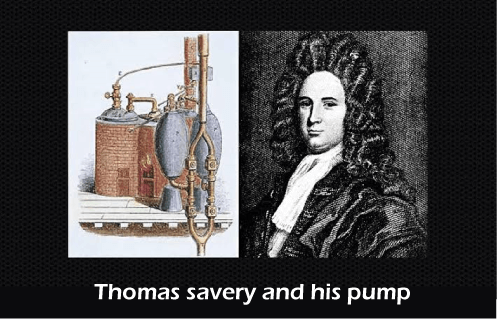
After Savery's pumping engine, a piston steam engine was developed by Thomas Newcomen in 1712. This engine was capable of transferring the power continuously to the machines, due to which it became the first commercial engine. This improvement was made on Savery's steam pump as well as with the use of Papin's piston. However, Newcomen's engine was inefficient as it worked in a cylinder by creating a vacuum with condensing steam under a piston. It is mostly used for pumping water and also for draining mines, and for providing reusable water at factories.
Now, James Watt made the major development (1763-1775) by improving the Newcomen's engine. He used a separate condenser connected to a cylinder by a valve in order to made improvements. The condenser allowed the steam cylinder to be maintained at a constant temperature and improved the functionality of Newcomen's engine, which was earlier lacking. Because of this improvement, his engine was better than earlier developed engine as it was more efficient and powerful. Further, Watt was also become famous for his improvement as well as for coining the term Horsepower. The SI unit of power, the Watt, is named after him. Furthermore, Watt's, with the partnership of Boulton's, made many improvements in stream engine that, in 1800, empowered the mills, factories, as well as bring the industrial revolution. 2. Some other important inventionsJacob Leupold developed a two-cylinder high-pressure steam engine in 1720. In these engines, two heavy pistons were used to give motion to the water pump. In 1801, Richard Trevithick and Oliver Evans separately developed a high-pressure engine. These were more efficient, faster, more powerful, and small enough for transport. Trevithick, as well as other inventors, developed the Cornish engine in the 1810s. This engine was a compound cycle engine. For working more efficiently, first, it uses the expanded high-pressure steam and then condensed the low-pressure steam. These engines were in use until the nineteenth century. They were usually used for supplying water as well as in the mines. These steam engines remained the dominant source until the early 20th century. Later due to some improved design over it like a steam turbine, electric motors, and internal combustion engines that replaced the piston steam engines. 3. Developments of the steam engine for road and railway vehiclesWith the development of the steam engine, several experiments were made to use them on roads and railways. In 1784, William Murdoch, from Scotland, developed a road locomotive steam engine. Afterward, many developments were made on the steam locomotive engine. John Fitch of the United States, as well as the pioneer of Steamboat, was designed the steam rail locomotive in the 1780s or 1790s. But it was Richard Trevithick from the United Kingdom who made an improvement as he built the first full-scale working railway steam locomotive. The first journey of the railway had been taken place in 1804. It covered the distance from Merthyr Tydfil to Abercynon in South Wales. Collier railways in north-east England became the center of the experiment for steam locomotives, and various developments were made for railway like; catch me who can win 1808 by Trevithick, Salamanca by Matthew Murray. In this area, an important development was made by George Stephenson. He made the first steam railway in Stockton and Darlington for the public in 1825. He also made The Rocket which won the Rainhill trial. In 1830 the Liverpool & Manchester railway opened and used steam power for both passengers as well as freight trains. However, steam locomotives were used until the late 20th century due to some other advanced experiments on them. 4. A major development in the steam engineThe final and major development of the steam engine was steam turbines that started in the late 19th century. Steam turbines were more efficient than piston steam engines, so they replaced them in electricity generating stations in the early 20th century. Now, most of the electric power is provided by steam turbines due to their more efficiency and higher speed which is appropriate for generator service. So overall, some other engines like, there was a horizontal engine (Corliss steam engine), which was patented in 1849. But during giving Rumford Medal to Corliss, the committee said that still after Watt's, no one invention of the steam engine is as efficient as his. Afterward, there was great progress in Steam Vehicle design in the first half of the 19th century, and it became for commercial purpose by the 1850s. But later, it was prohibited by legislation. In the 20th-century development of the internal combustion engine replaced most of the steam engines except the few that were used beyond the Second World War. The Marine engine, which was a compound engine, was widely used by the end of the 19th century. It gave improved efficiency for shipping as it could have reduced the weight of goods and coal that was carried through it. Components of the steam engineBasically, the components of a steam engine are cylinder, piston, connecting rod and beam or a crank, flywheel, and various linkages. Steam was alternately supplied alternatively and consumed by one or more valves. The speed was controlled automatically by a governor as well as it was also controlled manually by a valve. The cylinder castings carried steam for supplying and exhaust ports. One other type of engine is equipped with a condenser that exhausts the atmosphere. Some other components with their usesPumps: It is used for supplying water to the boiler during working. Condensers: It is used for recirculating the water as well as retrieves the latent heat of vapor. Super-heaters: It is used for raising the temperature of the steam to a higher degree. It also used several techniques for increasing the draft for fireboxes. Types of the steam engineBasically, there are two types of the steam engine:-
Different models of the steam engine
Advantages of the steam engine
Disadvantages of the steam engine
Next TopicList of European Countries
|
 For Videos Join Our Youtube Channel: Join Now
For Videos Join Our Youtube Channel: Join Now
Feedback
- Send your Feedback to [email protected]
Help Others, Please Share




